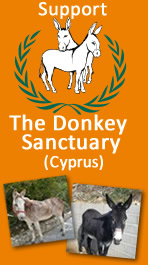
Horseytalk.net/Hoofbeat EXCLUSIVE
RIDER RIGHTS

Maureen Comber writes to Professor Christopher Rodgers,
Head of School, Newcastle Law School, Newcastle University
- At least 52, probably many more by now, Wildlife Trusts either for themselves or the Local Council with whom the common land may be vested, have applied for HLS funding for fencing the commons concerned?
This seems to me to be against all the legislation provided under English law to keep these open spaces unencumbered by structures such as fencing, which can completely alter the landscape. Indeed the HLS guidance is clear that the character of the landscape should not be altered but be enhanced.
- The steam rolling actions by the Quangos against the spirit of the legislation for the protection of our common lands and against public opinion is lamentable and there seems to be no way to stop it short of a High Court action, which is impossible for commoners in today’s economic climate.
Says Maureen Comber

 I have just finished reading your book ‘Contested Common Land’ which is written with Staunton, Winchester and Pieraccini. I found it very helpful in my bid to try and understand why all the rules, regulations and laws seem to be being broken at the moment, by Wildlife Trusts, in co-operation with Local Councils, The Planning Inspectorate and seemingly encouraged by Natural England, in order to fence many commons Nationally.
I have just finished reading your book ‘Contested Common Land’ which is written with Staunton, Winchester and Pieraccini. I found it very helpful in my bid to try and understand why all the rules, regulations and laws seem to be being broken at the moment, by Wildlife Trusts, in co-operation with Local Councils, The Planning Inspectorate and seemingly encouraged by Natural England, in order to fence many commons Nationally.
Page 67 may hold the answer in that it says “Measures under the EC Rural Development Policy are only available for applicants engaged in ‘farming’, and are therefore inapplicable if a common is not put to an agricultural use. The determining factor here is the economic use to which commoners put their rights, rather than the nature of the rights themselves – only common rights holders who are registered as farmers for the receipt of European Community subsidies can claim agri-environment payments under schemes such as ESA, ELS or HLS.
It follows that agri-environment schemes such as HLS have no potential application for the management of ‘recreational’ commons or those whose primary feature is (paradoxically) their high nature value rather than their value as an agricultural resource.”
In view of this it is all the more puzzling why at least 52, probably many more by now, Wildlife Trusts either for themselves or the Local Council with whom the common land may be vested, have applied for HLS funding for fencing the commons concerned?
This seems to me to be against all the legislation provided under English law to keep these open spaces unencumbered by structures such as fencing, which can completely alter the landscape. Indeed the HLS guidance is clear that the character of the landscape should not be altered but be enhanced.
Although objections have been made to these applications by concerned persons, the legal details seem to be overlooked by the Planning Inspectorate who appears to be just rubber stamping them because they are persuaded by the collaboration of the Quangos’ rather than the legal bench marks.
For example:
- a consultation will be held by the County Council’s Environmental Consultant with the public, on ways which they might manage the land. They will not previously have held talks or discussions with the Commoners who will therefore not know of the various suggestions put forward in advance of the public consultation.
- It is quite clear that the emphasis is really to promote the principle of grazing which will of course require the fencing of the common to prevent the cattle straying. On the lowland heaths’ grazing has not been carried out for decades, rather the common heaths have been deliberately allowed to deteriorate to discourage human activity and give the wildlife an uninhibited lifestyle. This has been to the detriment of public access because the gorse and brambles have obstructed the small tracks through the heather which were once customarily used by walkers and horse riders.
- In fact the wildlife seems not to have appreciated their protected environment either because the sand lizards for example have moved to more open ground and their numbers have reduced.
However that is by the by. Next the application is made by the Wildlife Trusts on behalf of the Local Councils. The applications are made as if the Councils’ or the Trusts themselves, actually own the common which in many instances is not the case since the common lands without owners were ‘vested’ with councils under sec.9 of the CRA 1965. If I have understood correctly that gives them the powers to protect the land from encroachment and abuse rather than the opposite.
Local Councils nor Wildlife Trusts have rights of common so how is it that they can apply to graze cattle in any case?
In the case of Padworth Common, at Public Inquiry it was shown that the HLS agreement was subject to disregard and abuse by the applicants during the short time the Inquiry sat, before the Inspector postponed it (now withdrawn), because although it was stated that they had signed the document in fact they had not actually done so. Natural England officers appear to ignore this requirement?
In addition at Hawkesbury, the local authority has admitted they did not consult the commoners because they did not think it was necessary!!
A recent letter from the Minister, Richard Benyon to me, clearly states that these matters fall between the applicant and the commoners and that a formal declaration also accompanies the application that they are able to deliver the management outcomes for which they have applied.
In fact I am told that what actually happens is that the NE officer and the dictates from the heathland adviser implies that no funding will be forth coming without extensive grazing over the whole of the common. We have examples of a number of agreements which clearly state that the agreement is thus predicated from the very start before any consultation with the public.
It appears to me that the Wildlife Trusts are keen to take possession of the land with the focus entirely on wildlife rather than manage it sensitively and/or make it accessible and open to the public for air and exercise. Please see picture attached which I was told by Hampshire County Council Countryside Dept. was erected by instruction from Natural England.!! This after I had complained in my capacity as Secretary of the Broxhead Commoners Association that I had not been consulted and it constituted an offence under sec.38 (3b) CA2006. The result was that five more similar signs have been erected without consultation with Broxhead Commoners or anyone else for that matter.
The steam rolling actions by the Quangos against the spirit of the legislation for the protection of our common lands and against public opinion is lamentable and there seems to be no way to stop it short of a High Court action, which is impossible for commoners in today’s economic climate.
I am sorry I am unable to come to Newcastle for the seminar on 5th July but hope this information will be of interest. It is not just the damage to the landscape character but the difficulties caused by fencing and gates particularly when it comes to horse riders. We are not all 30 something and fit by any means but of course probably once were and are still able to enjoy our recreation given that we are not obstructed either physically by fencing and gates or by overzealous wildlife managers focusing on a single issue and keen to take control of our customary rights.
I note that on page 87 of ‘Contested Common Land’ you require examples between tradition and modern property rights; environmental character and changing conceptions of environmental value; evolving patterns of economic use and aesthetic and recreational demands, so that governance of common land can be fully understood. I hope to write to you again soon with my personal experiences over the last forty years in this regard.
In the meantime there are a couple of other prime example of malfeasance connected with common land and the Land Registry. (LR)
I was recently informed by the LR that fifteen years was considered to be a good root of title and that the fact that Broxhead Common is listed in the Award of the Headley Tithe Apportionment Act 1847 as common land used by several persons, was an irrelevance. I had also produced evidence to show that the person registered as land owner and who had bought the common in 1970 could apparently show no conveyance to it before 1962, and had not in fact registered the common as his until 2004, whereas 19th century sale particulars of his property and another considered to be the dominant tenement, stated they had common rights only. Also the common was requisitioned by the MOD until the late 1950’s. The LR showed no interest in investigating unless I could produce another owner. Since Broxhead appears to me to be a sec.9 CRA 1965 common that is not possible.
Unless the LR is instructed to be more mindful of its responsibilities with regard to common land then a useful tool for its protection is being lost.
An even worse case was brought to my attention with the matter of Whitchurch Heath Common CL21 in Shropshire. Here part of the common has been sold to Butterfly Conservation under the aka of Prees Heath for an inflated price with money obtained from the Heritage Lottery Fund! It has now been fenced and the customary right of access for horse riders denied. The conveyance documents are extremely suspect since Whitchurch Heath Common is not mentioned on them, so the conclusion might be that they have been sold land which actually does not exist, not by that name anyway because Whitchurch Heath is also a sec. 9 common under CRA 1965!!
 Tony Barnett of ‘Common Heritage’ has written about his experience with this which continues as I write, in his book called ‘Honest Charities or Fraudsters’. www.horseytalk.net
Tony Barnett of ‘Common Heritage’ has written about his experience with this which continues as I write, in his book called ‘Honest Charities or Fraudsters’. www.horseytalk.net
It seems to me there needs to be a way that the public can challenge authority as they once could through the Planning Inspectorate and the Local Government Ombudsman. But these bodies now just say that the matters need to go to the High Court but make no move to help other than to say the complainant has an opportunity to take the matter to the High Court!
I am afraid that unless there is an avenue for justice for the public then we are set to lose many of our traditional rights and customs which are as important as they ever were 800 years ago but perhaps for different reasons.
Could it be that the EU and its funding are doing more harm than good?








